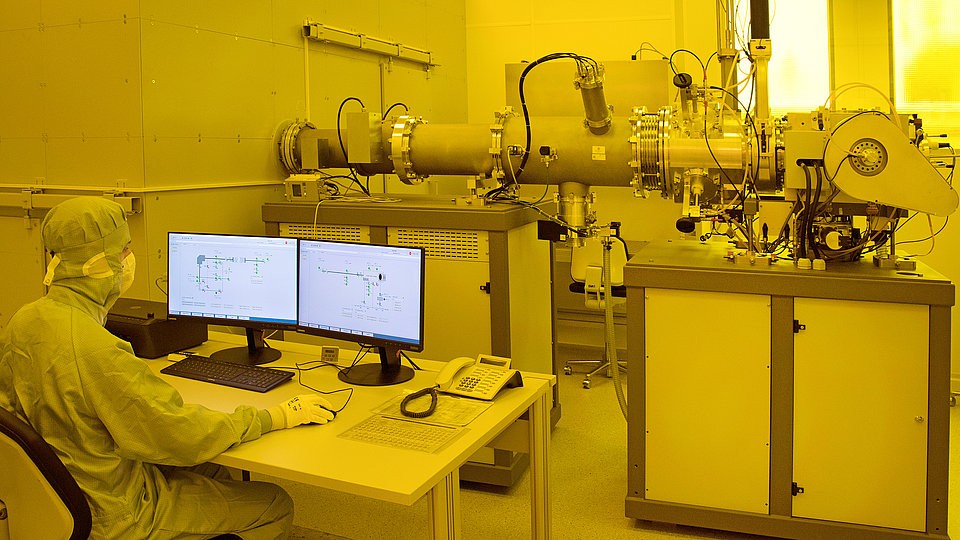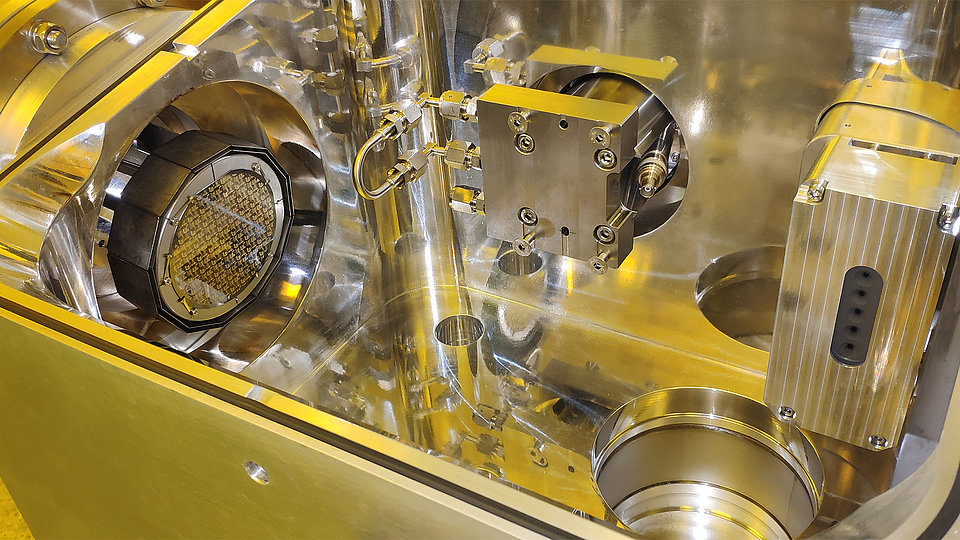Extended capabilities – novel ion implanter starts operation
Fig. 1: Operator terminal and beamline of the new ion implanter - a crucial tool for innovative semiconductor devices.
Ion implantation is a keystone in the fabrication of modern semiconductor devices. It allows to modify the material properties of a base material locally by implanting ions. At FBH, typically hydrogen, helium, nitrogen, oxygen, silicon and magnesium are implanted, but other elements such as arsenic, iron, sulfur and tin are also processed. Wafers with a mask that partially covers the surface are put into a high vacuum chamber and blasted with ions that are accelerated in a very high electric field. After removal of the mask the wafers can be annealed at an elevated temperature to activate the implanted ions.
FBH has now started the operation of a new medium-current implanter system in the cleanroom (see Fig. 1). The new tool allows an implantation energy between 5.000 and 500.000 V and a beam current of up to 2 mA. The high acceleration voltage requires that parts of the tool are located in a shielded room.
To tailor the material properties to the needs of the product, the ability to flexibly generate different ions from solid and gaseous precursors is an important feature for R&D applications. For this purpose, FBH’s new implanter is equipped with various options. In addition to use precursors from standard gas bottles the tool also offers the option to extract hazardous gases from special safety bottles. To evaporate solids, the tool is equipped with a low temperature oven (up to 600 °C) and one for high temperatures (up to 1600 °C). Elements that would require even higher temperatures (such as W or Nb) can be generated from a sputter source.
The new tool also features a high-temperature chuck for wafers (see Fig. 2). The wafer mounted on this chuck can be heated up to 800 °C during implantation. This allows implantation and activation at the same time and is beneficial for advanced implantation schemes for new materials.
For enhanced manufacturing, the new tool is equipped with oil-free pumps and a large wafer chamber that allows simultaneous implantation of up to four 100 mm wafers or five 3” wafers. This feature can save time, guarantees identical implantation conditions and eliminates experimental wafer-to-wafer scatter.
Meanwhile, FBH has successfully qualified the implantation of nitrogen, oxygen, carbon and hydrogen and is now introducing the tool into its manufacturing processes.
This work was supported by the German Federal Ministry of Education and Research (BMBF) under the project reference 16FMD02 (Research Fab Microelectronics Germany - FMD).

